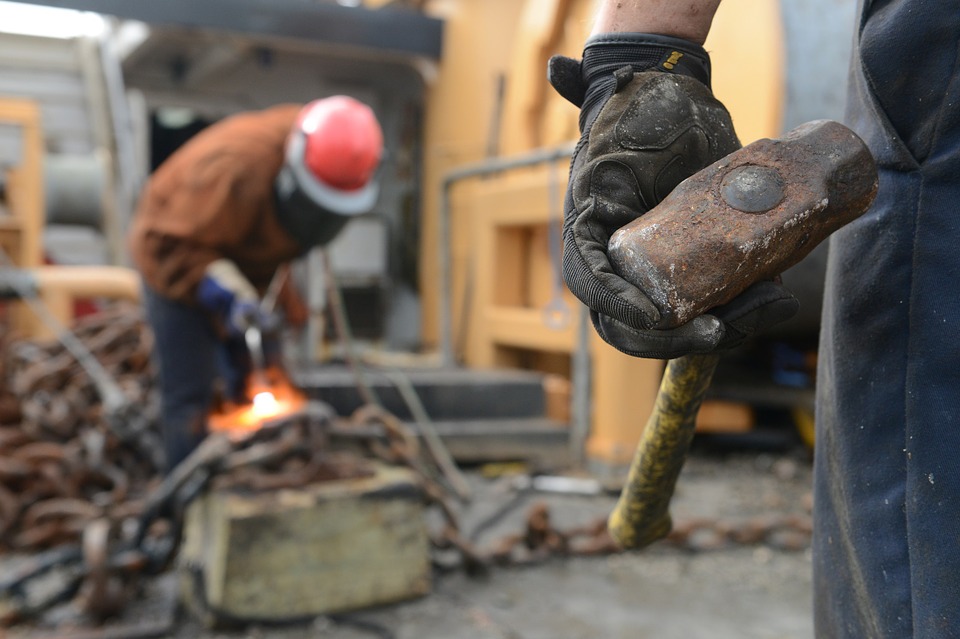Construction output falls during first quarter
Output in the UK construction sector has continued to fall despite a slight increase last month.
Figures published today by the Office for National Statistics (ONS) show that although this month’s figures have seen a rise in output by 0.4% and a 1.1% rise in new work respectively, the three-month on three-month figures have dropped.

Construction output decreased by 0.6% in the three-month on three-month all work series in February 2019; the all repair and maintenance, and all new work series saw decreases of 1.0% and 0.4% respectively.
The decrease in the all new work series was driven by a fall in private commercial new work, which decreased by 3.7% whereas the decrease in all repair and maintenance, was driven by a fall in non-housing repair and maintenance which decreased by 2.6%.
In the month-on-month series, all repair and maintenance fell by 1.0% in February 2019.
Steven Simpson, managing director of Cruden Homes (East), was encouraged by the figures but warned of the continued challenges facing the sector.
He said: “It is encouraging to see construction input figures climb this month. There continues to be high market demand for new housing and Cruden has had a strong start to 2019 - in fact the best in recent years.
“That said, the industry is facing a series of challenges including a growing lack of skilled workers, rising material supply costs and continued uncertainty over Brexit which is starting to impact confidence in some market sectors.”
Mr Simpson added: “To help future proof the industry, it is vital that we invest in a pipeline of new talent and encourage more young people to consider a career in this thriving sector. We continue to support our employees’ lifelong learning and training through our Cruden Academy - allowing us to pave the way for future success, meet demand for much needed housing and continue to grow.”
Mark Robinson, Scape Group chief executive, said: “The first three months of 2019 have been shrouded in uncertainty and a steady stream of votes in parliament has seen MPs and the country distracted from the business of doing business. It is no surprise that construction output decreased during this time, with the constant threat of the UK crashing out of the EU with a no-deal, hanging over everyone’s heads.
“It is however positive to see infrastructure projects grow by 12.6% compared to February 2018, while new public housing saw annual growth of 14.7%. Both infrastructure and social housing are vitally important to the success of our local communities.”
Blane Perrotton, managing director of the national property consultancy and surveyors Naismiths, added: “Brexit jitters continued to rattle the construction sector throughout February.
“Despite the 0.6% drop in construction output during the three-month on three-month series, developers continued to march on into the unmapped territories of pre-Brexit Britain, delivering a 1.1% month-on-month rise in all new work.
“Construction output increased by 0.4% in the month-on-month all work series in February as developers held their own against swirling political upheaval.
“Private new housing may be offsetting a month-on-month decline but, with sentiment holed below the waterline, it’s hard to predict when the rolling three-month series will recover to levels seen before the huge declines of December.
“The industry is clamouring for clarity but confidence will only return once Britain’s future is confirmed — whether we’re inside or outside the bloc.”
Clive Docwra, managing director of construction consulting and design agency McBains, said: “Given the continuing ‘will-we, won’t we’ saga of when the UK will be leaving the EU, today’s figures buck the trend we were expecting. However, although there was moderate growth in February, the general trend is of slowing growth since mid-2018.
“Indeed, the long term outlook is even gloomier as a weak UK economy, volatile pound and worries over the long term impact of Brexit mean caution from investors is the watchword, as evidenced by a fall in private commercial new work. We expect that will translate into a continued, more serious, contraction for the sector over the coming months.”




















